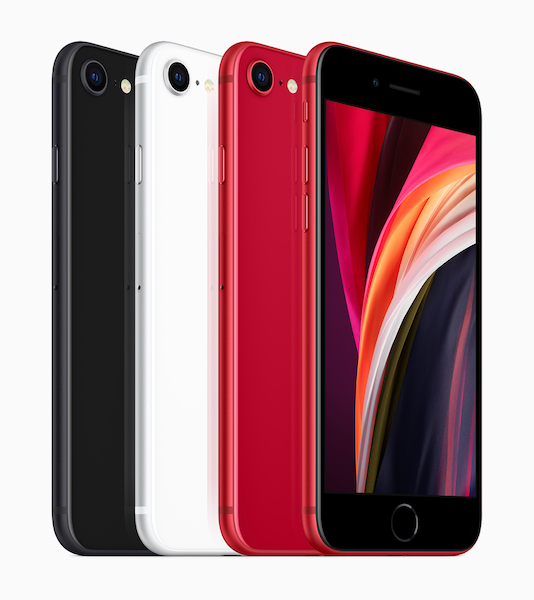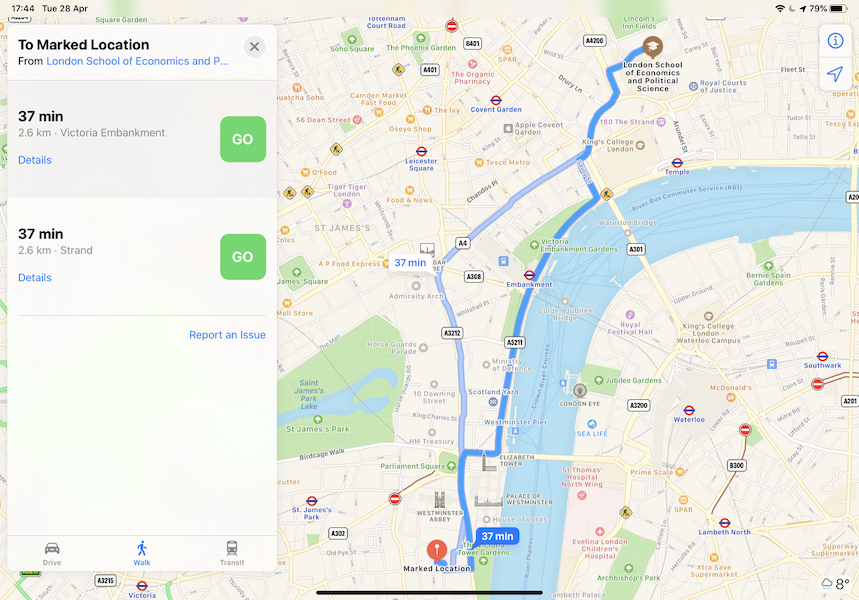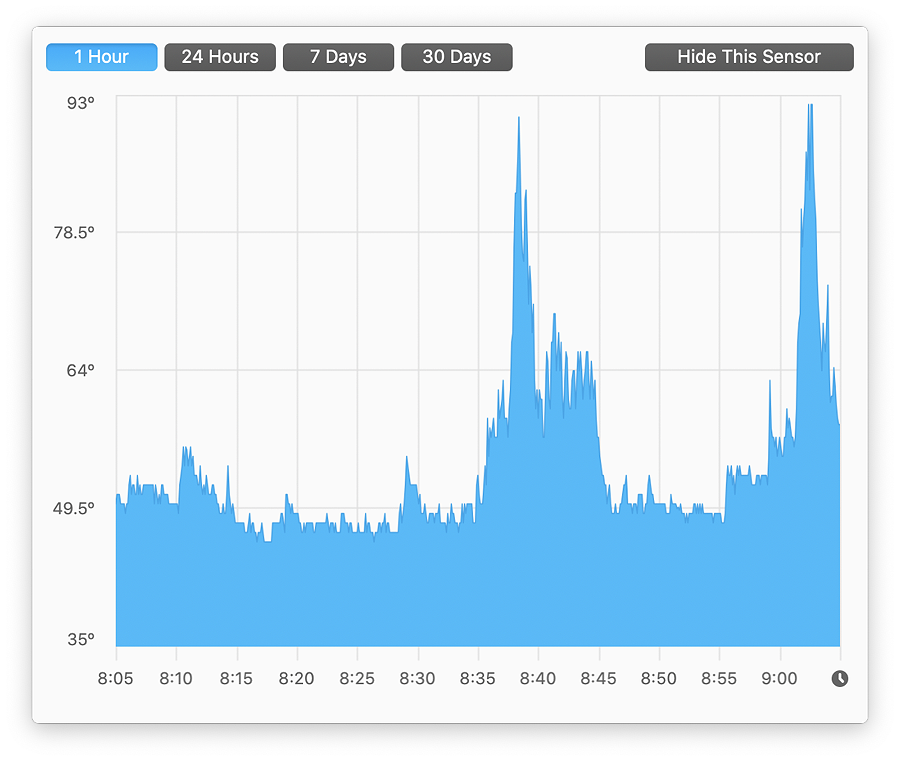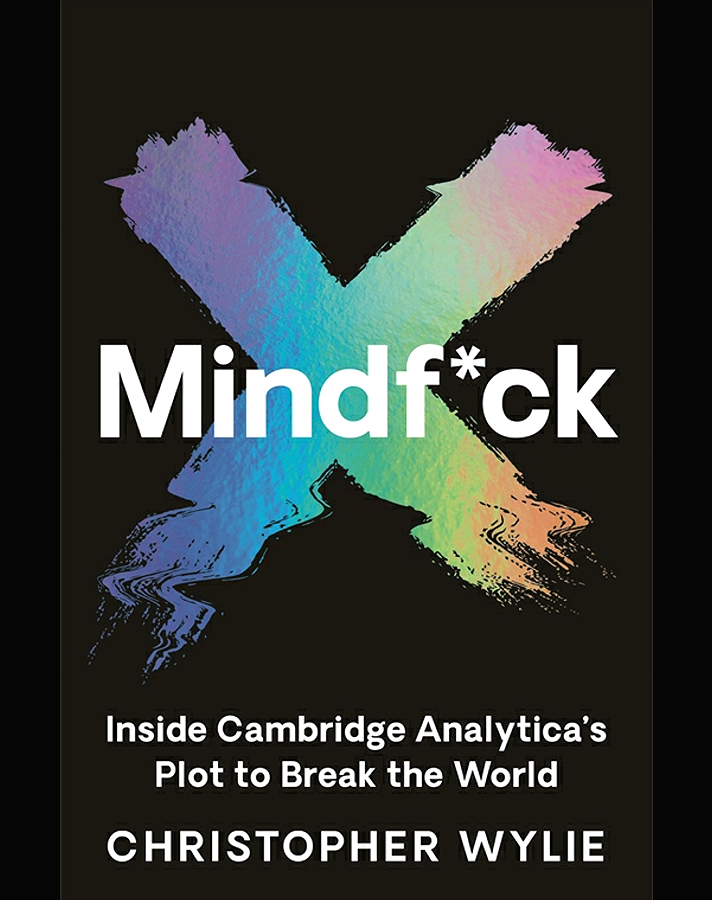|
|
Thursday Diversion: Big Data and Wylie's Revelations; Catalina Heat; iOS Sleep InterruptionsBy Graham K. Rogers
Well, sure, the whole world has been turned upside down and trying to make money and predict the future is harder than ever before. As I sit typing this early morning, I do not know what the day will bring personally (did we ever) or - should I be unlucky - if I will even be here next week. It sort of makes each day that bit more precious. A couple of years ago I met a former colleague who was always quite pithy. He said, "If I wake up in the morning and I am still breathing, it's a good day". That is all the more true currently. That second analyst notes the rebound in China which will help, even if Apple has revised its guidance, and also the arrival of the iPhone SE which has pleased a lot of people. As with the first SE, it uses older designs and parts so the cost to Apple is considerably reduced. Although it is a cheaper iPhone, it will still make Apple a lot of money; and as Apple has its online sales properly organized, this will also help sell the device. I predict that while it is likely that Apple will report lower figures, this will not be the disaster that some expect (or even hope for).

iPhone SE - Image courtesy of Apple
Apple released some beta updates this week, including a revised iOS 13.5, reports Juli Clover (MacRumors). Instead of 13.4.5 this has a new API for the Covid 19 tracking features. It is released now so that developers can work on it. That should be available in about 2 weeks. There is an update to face identification for those who wear masks. As I found weeks ago, if I am out in the street and need access to the iPhone (or iPad) my face is not recognized and I have to wait for iOS to offer me the passcode screen: the time for that will be reduced so users can enter the passcode more quickly and easily.
Despite what I had been told by Cisco information, the background I had used for the first conference the previous week (a department meeting that crashed) was not shown, and my bookcase and TV behind me were on display: not professional when I had wanted to show the same Star Wars background as before.
I started to read the pages as soon as I downloaded this from Amazon and worked through 3 chapters in one evening. A little slow, like Snowden's book, as the scene was set and background established it soon became clear that Wylie is a remarkable and intelligent young man, with the occasional flights of fancy. In one passage, he wrote about walking from the London School of Economics to a street near St James Park. I had worked next door to the LSE in the 1960s and was a little incredulous, particularly if he were in a hurry, and especially as he was partly disabled (he spent his teens in a wheelchair). I checked the maps and this showed a time of 37 minutes, which made me suspect that the "walking" was a romantic insertion: perhaps he took a taxi, or the Tube (although LSE to the nearest station is a bit of a walk itself).

The link then was the use of Facebook data which was vacuumed with the use of Kogan's app which worked in concert with MTurk [an Amazon tool]:" a person would agree to take a test in exchange for a small payment. But in order to get paid, they would have to download Kogan's app on Facebook and input a special code. The app, in turn, would take all the responses from the survey and put those into one table. It would then pull all of the user's Facebook data and put it into a second table. And then it would pull all the data for all the person's Facebook friends and put that into another table." Thus data from over 200 million Facebook users was collected. Chapter 11, on the way preparations were made for release of the story in the NYTimes and the Guardian, as well as a related Channel 4 sting in which Alexander Nix was offering the services of AC to someone purporting to be from Sri Lanka, had me on edge.
One of the fears I had was about Time Machine. Once I deleted the disk I was trying to use and added it again to the Time Machine list, the backups went fine. Indeed, they were so quick that I began to worry that this was not being done. I clicked on the icon in the Dock and checked back to when I had updated and saw that all the daily panels were backed up OK. Rather than the lengthy time of Preparing, backing up, then Cleaning Up, the whole process has been tidied up and the cumulative updates (the changes from the previous backup) are recorded within a couple of minutes. This is much cleaner. As I work with the new update more, I am finding certain things running really well, like Time Machine, while others are not making me happy. An example is Photos. The RAW images I work with are fairly large, but nothing that a modern computer should not be able to handle. Since the update I have found that while editing images, I suddenly become aware of the fans working. This is something that creeps up on me. The twin fans in the MacBook Pro are quiet to begin with, but as the computer heats up, they speed up and eventually I become aware that they are racing away. With the installation of the iStat menubar tools, I have been monitoring this closely. I noticed one afternoon that although I had stopped editing hours before, the fans were still racing away. I quit Photos, but this did nothing to reduce the speeds. Activity Monitor showed that a Photos-related process was running and this was taking up a lot of power. I restarted the Mac, but noticed that even through the restart, the fans continued, and after the restart that process was still running. Eventually, the process took less power, the temperatures reduced and the fans went back to the silent running. This is something I will have to monitor.
 Peak temperature readings in iStat while editing in Photos
I submitted a report to Product Feedback. One of the items I was asked to provide information on was the number of photos in the Library. This is done using a drop-down panel and selecting a range. I noted that the highest was more than 200,000. With 18,000 I am a mere amateur.
I then added the renamed disk to Time Machine and let it do its thing, expecting the first backup to take a while, beginning with "Preparing backup." After a while, it again reported, Backed up: Zero KB - Freeing Space. I started again, this time erasing the disk in a different way and that was successful. After a while preparing, the first backup was successfully completed. I have one more Mojave Time Machine disk, but that is in my office as an off-site backup: if there were a fire, there is no point losing all backups together, so I always keep one in a different location. I just returned one disk to my office and recovered another which I will now set up for Time Machine.

The final Time Machine disk
After a couple of these I looked at the list, but in Airplane Mode none of these show the on/off switch, so I had to turn off Airline Mode, access one or two of the specific apps that I could identify as those having messages coming through and turned off the sound. That way, the messages will still be listed but there was no sound and I was able to go back to sleep.
Graham K. Rogers teaches at the Faculty of Engineering, Mahidol University in Thailand. He wrote in the Bangkok Post, Database supplement on IT subjects. For the last seven years of Database he wrote a column on Apple and Macs. After 3 years writing a column in the Life supplement, he is now no longer associated with the Bangkok Post. He can be followed on Twitter (@extensions_th) |
|


 As part of the preparation for teaching, I had downloaded Mindf*ck from Amazon: the book by Christopher Wylie on his participation and subsequent whistleblowing at Cambridge Analytica (CA). Although I have been teaching about the potential of big data - thinking in terms of supermarkets and large companies with the stock management and sales predictions - I was aware that the way CA had managed to acquire and use the data of millions of people had changed the ways in which people could be shown how to think: and vote.
As part of the preparation for teaching, I had downloaded Mindf*ck from Amazon: the book by Christopher Wylie on his participation and subsequent whistleblowing at Cambridge Analytica (CA). Although I have been teaching about the potential of big data - thinking in terms of supermarkets and large companies with the stock management and sales predictions - I was aware that the way CA had managed to acquire and use the data of millions of people had changed the ways in which people could be shown how to think: and vote.
